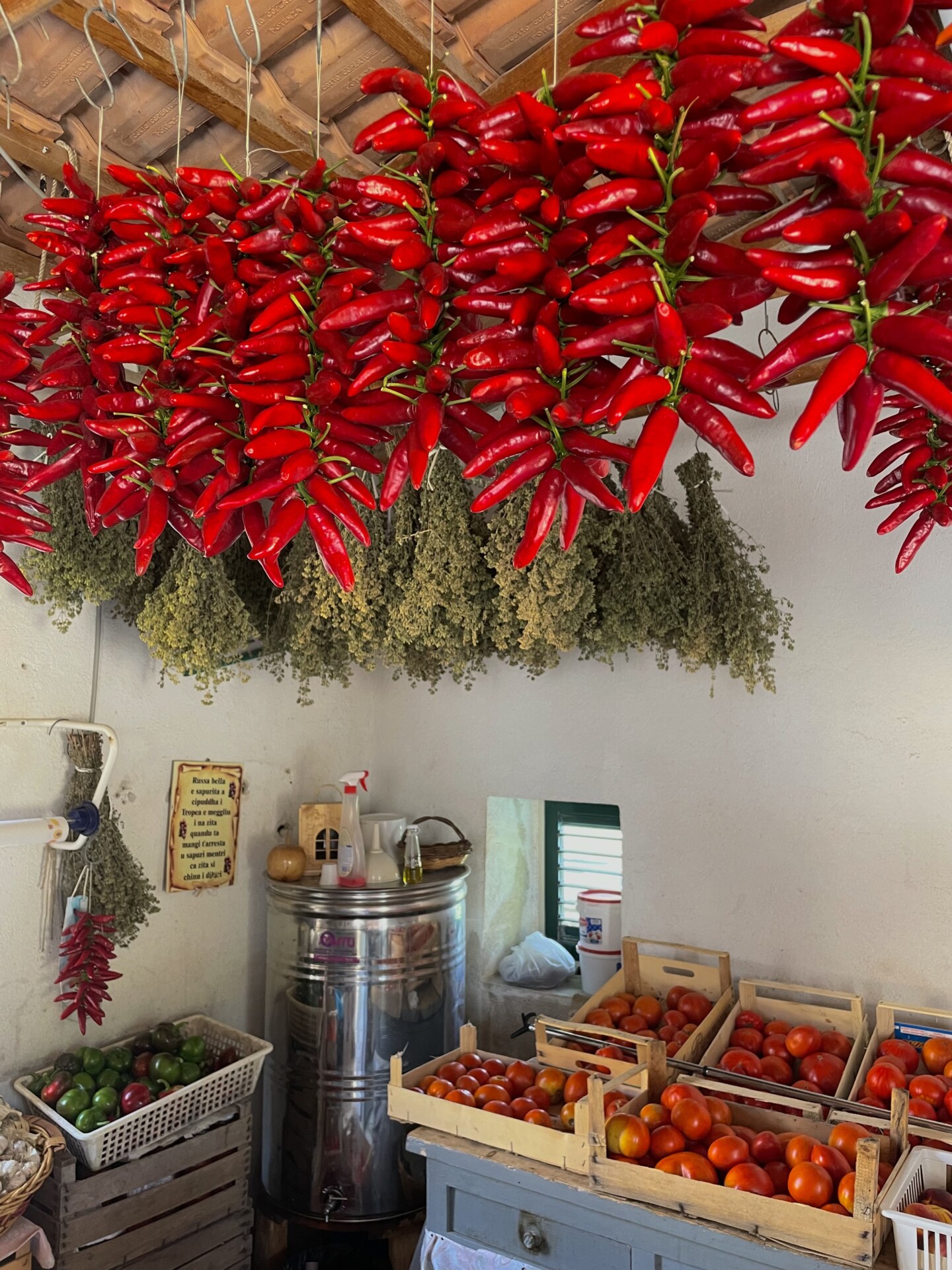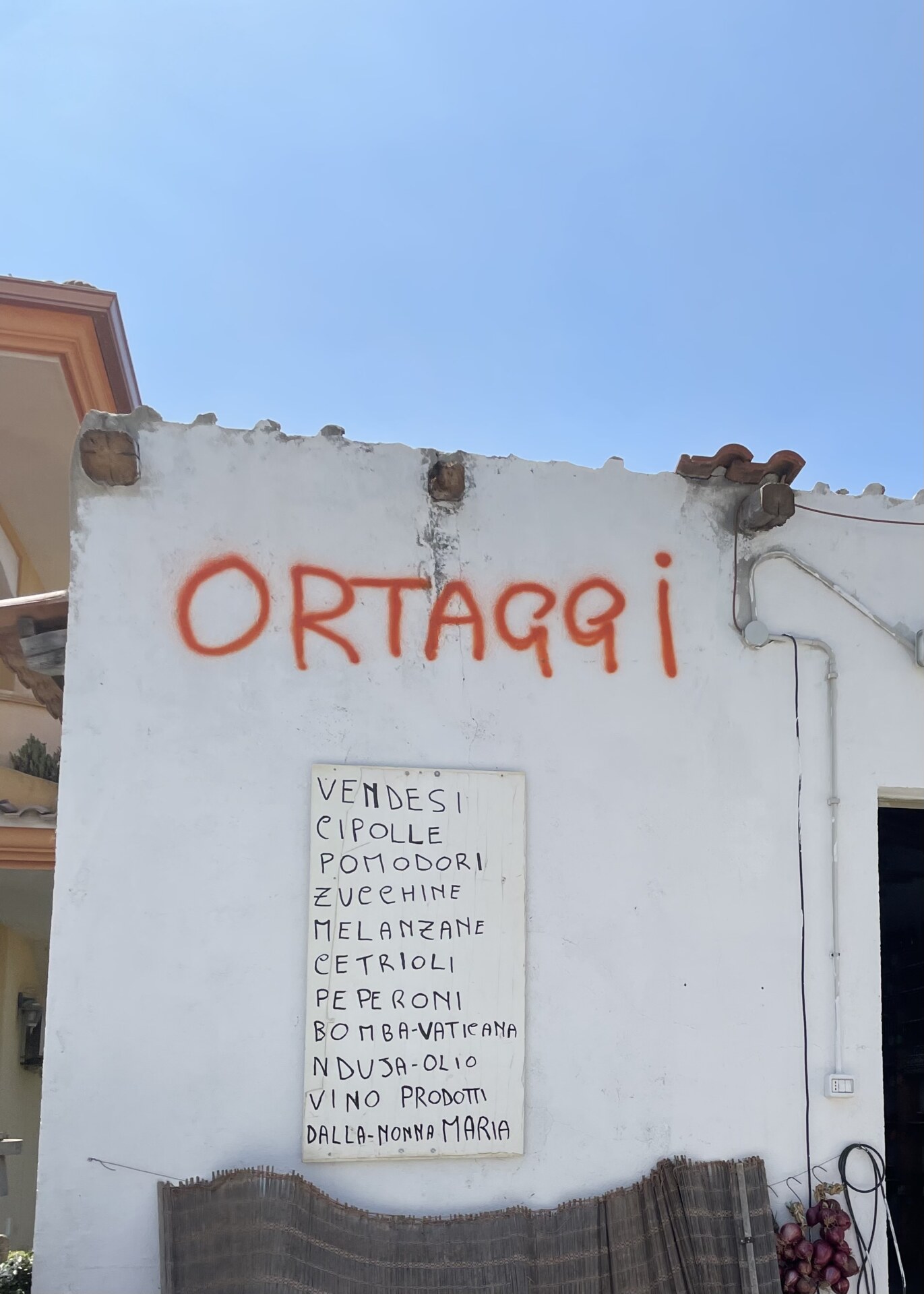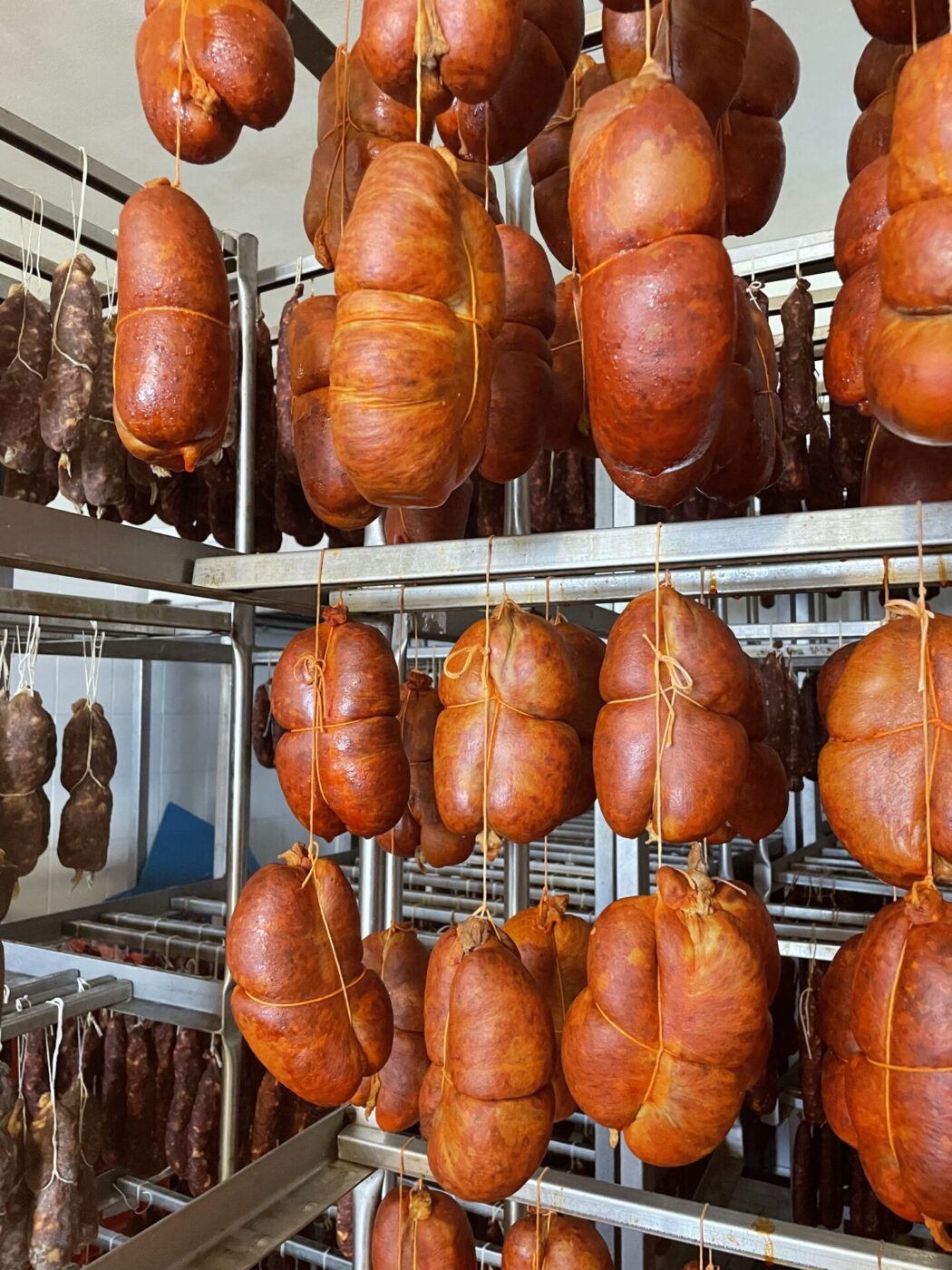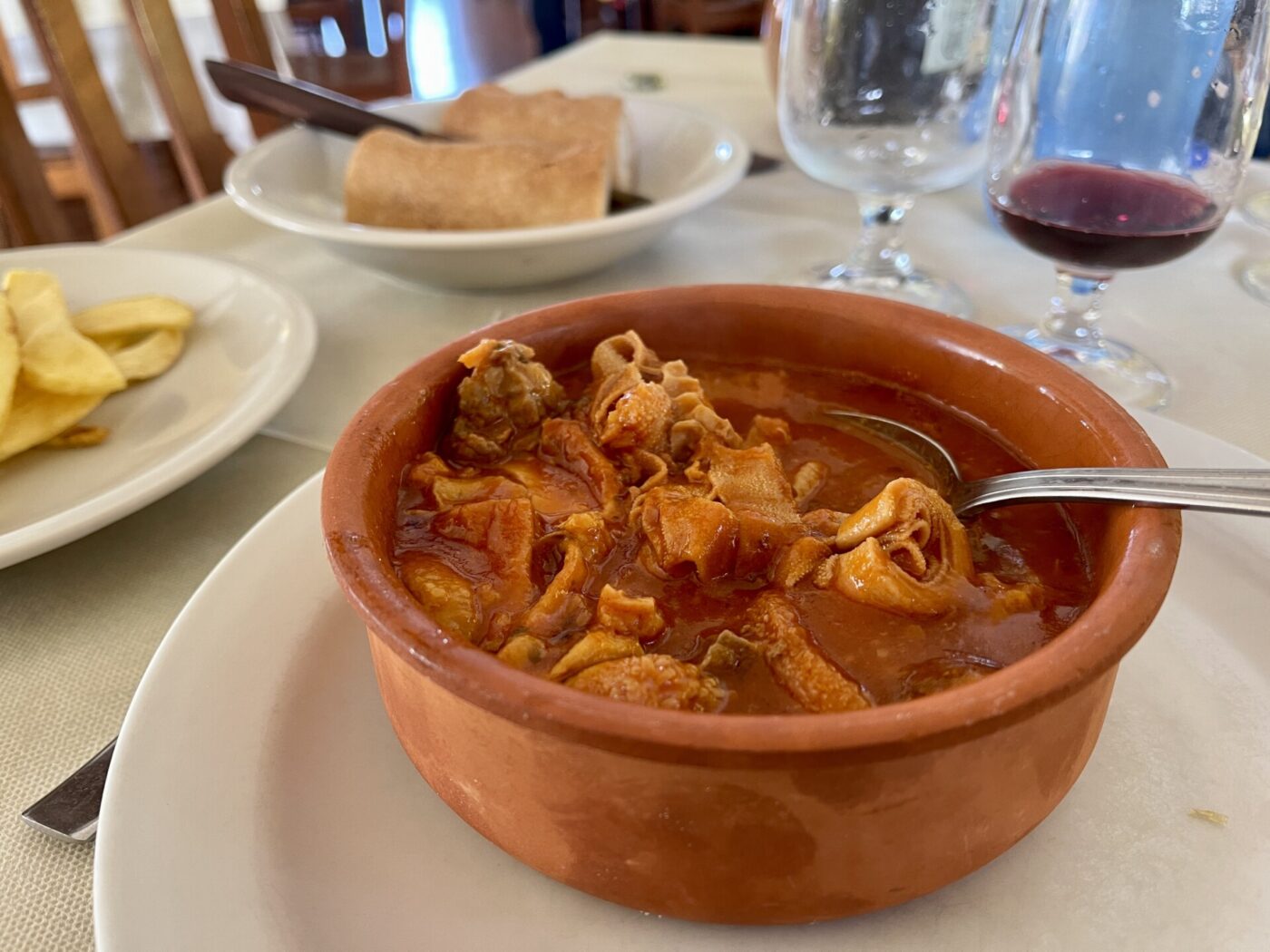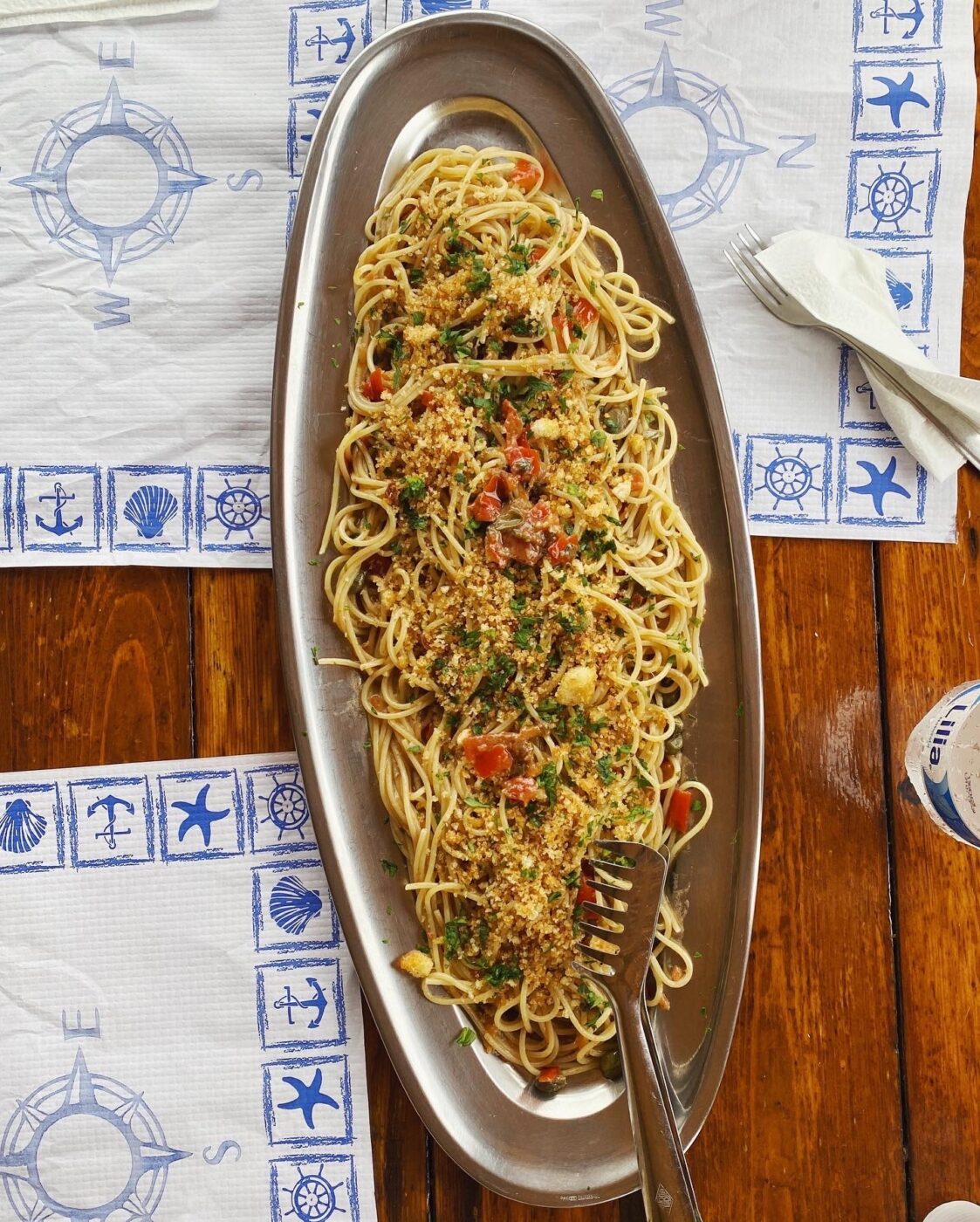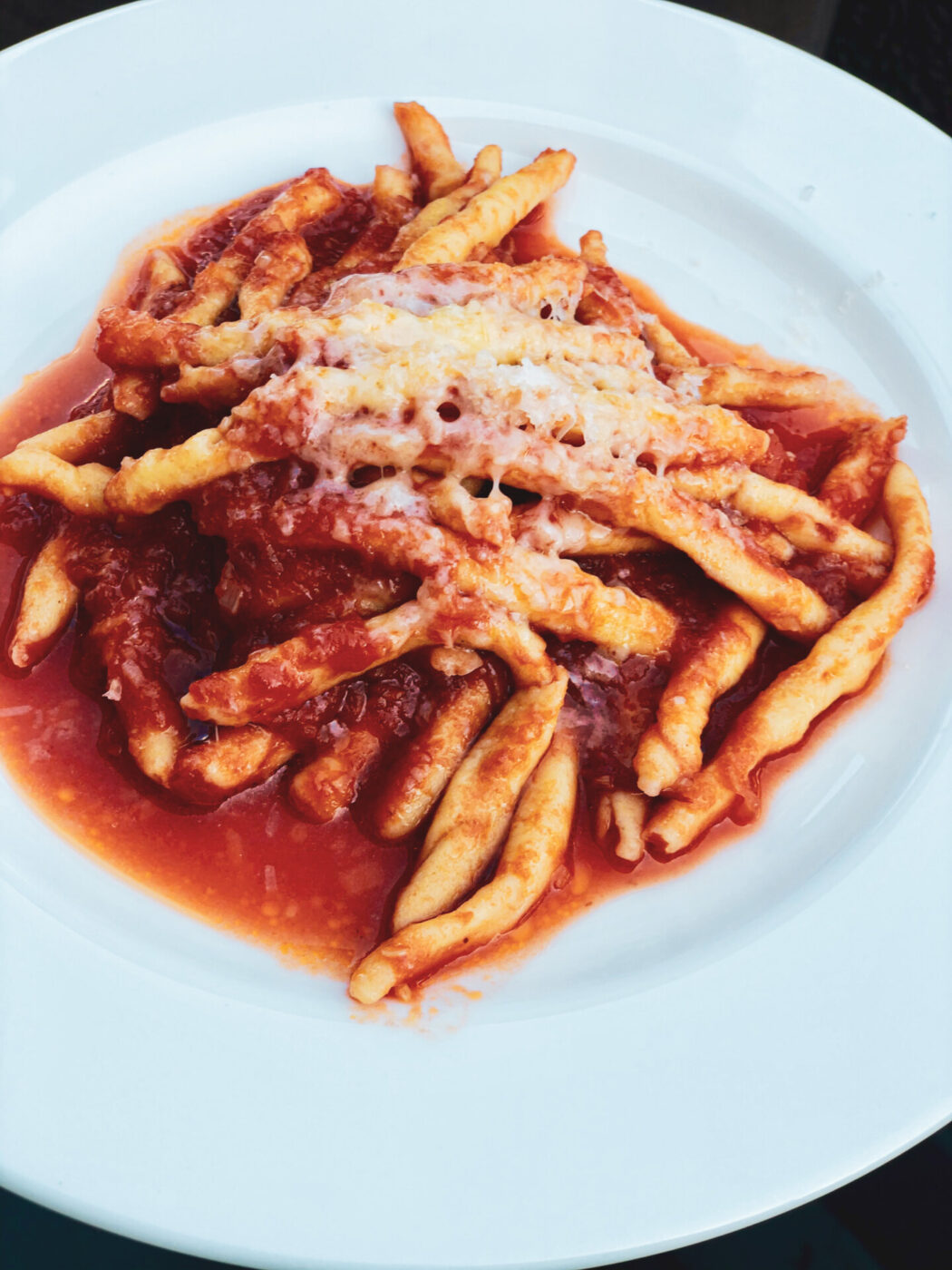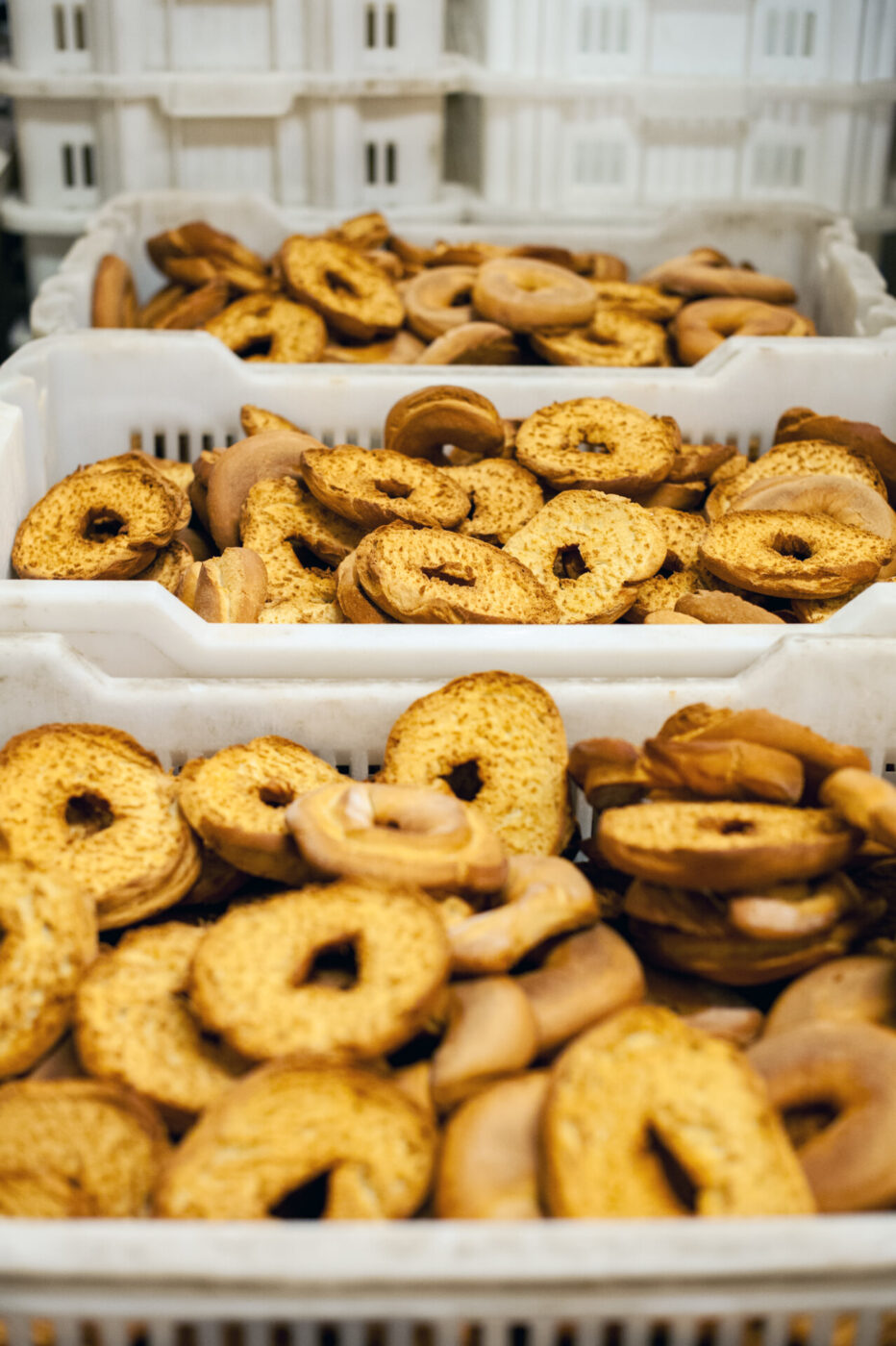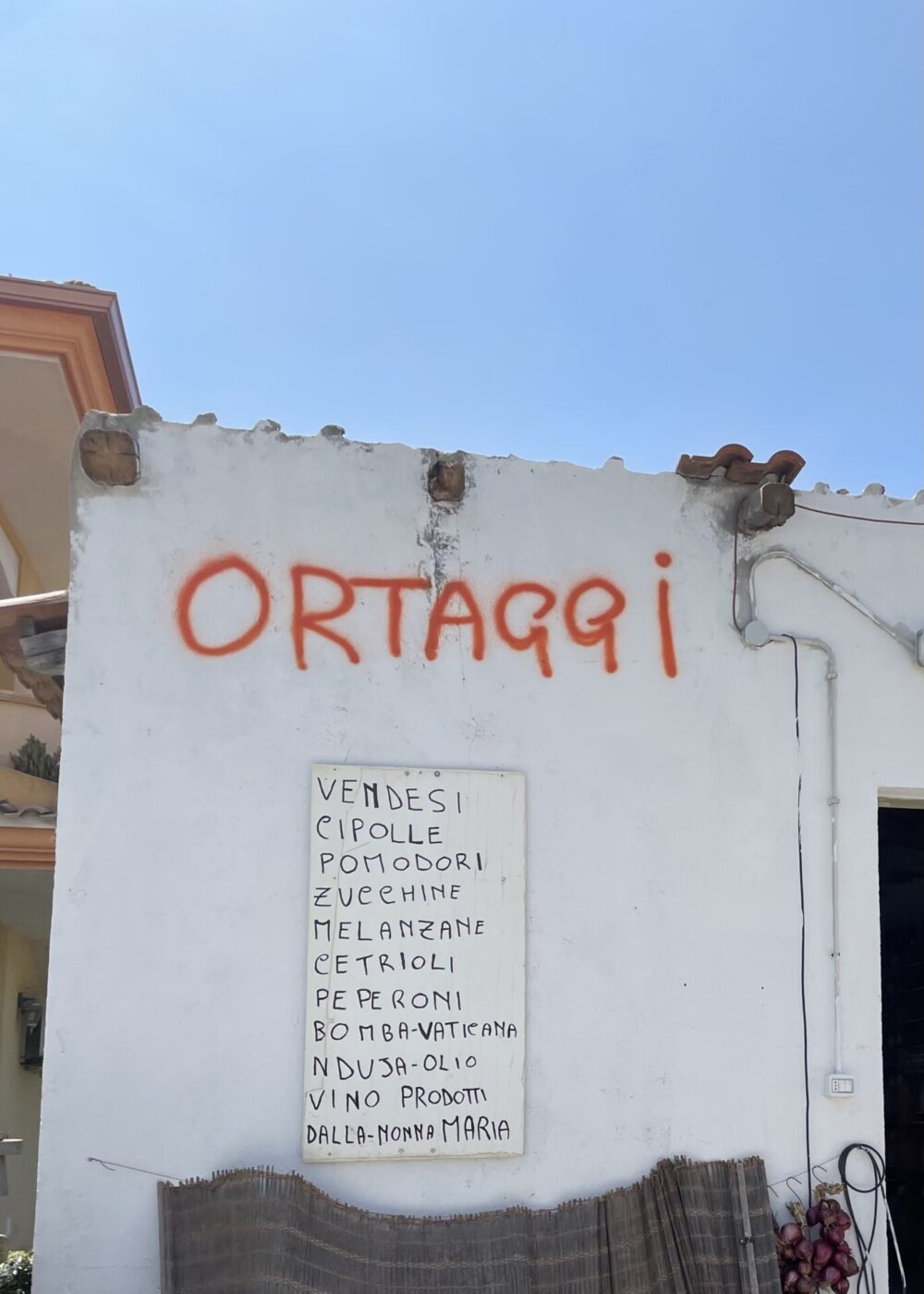The head-sized citrus and super fruit cedro. The sweet, fragrant onions from Tropea. The spicy, smoky, spreadable ‘nduja. The piquant pepperoncini. Calabria’s cuisine is born on the backs of its stellar ingredients–cooked into rich stews, baked into simple breads, and melted into pasta sauces. Calabrian food is no-frills stuff.
Tomatoes and eggplants are popular, seafood is as fresh as can be, pork finds hundreds of preparations, and, perhaps the most differentiating factor of Calabrian cuisine, food is spicy. Here, peperoncino Calabrese, the region’s namesake hot chili pepper, is doled out with a liberal hand and eaten whole, fried, crushed, pickled, powdered, or in a paste. You’ll see long threads of them hanging to dry from windows and storefronts, adding a palette of fiery red to more than just food across the region. Here, 20 of our favorite Calabrian foods, with options for both the pro-spice and anti-spice contingents:
TARTUFO DI PIZZO
This award-winning ice cream concoction dates back to 1952 in Pizzo, when Neopolitan gelato maker Giuseppe De Maria ran out of serving cups at a local noble’s wedding. Improvising with the tools on hand–quite literally, his hands–De Maria shaped a sphere of chocolate and hazelnut ice cream, filling it with melted chocolate and dusting with cocoa powder once solidified. The format was so successful that you can now find tartufi in a whole host of flavors, as well as on the menus of old-school Italian American joints in cities like New York and London.
‘NDUJA
By far Calabria’s best-known product beyond international borders, this spicy, spreadable pork sausage comes from the town of Spilinga. While its roots in the region remain under scrutiny–some link it to the French “andouille” and others to the Spanish “sobrasada”, and the respective Angevins and Aragonese rulers–’nduja was the innovation of poor pig farmers. After selling off their prime cuts, these farmers were left with scraps; excess fat, trimmings, and innards, however, could be transformed into something delicious when minced together, seasoned aggressively with pepperoncini, fermented, and aged for an extended period. The stuff’s fame has now spread beyond Calabria–where it’s stuffed into panini, dolloped upon pizza, and cooked into pasta sauces–to the provinces of small plates restaurants worldwide. Having conquered eaters in New York and London around 2015, ‘nduja’s popularity is still on the rise, so keep an eye out for it no matter where you may live.
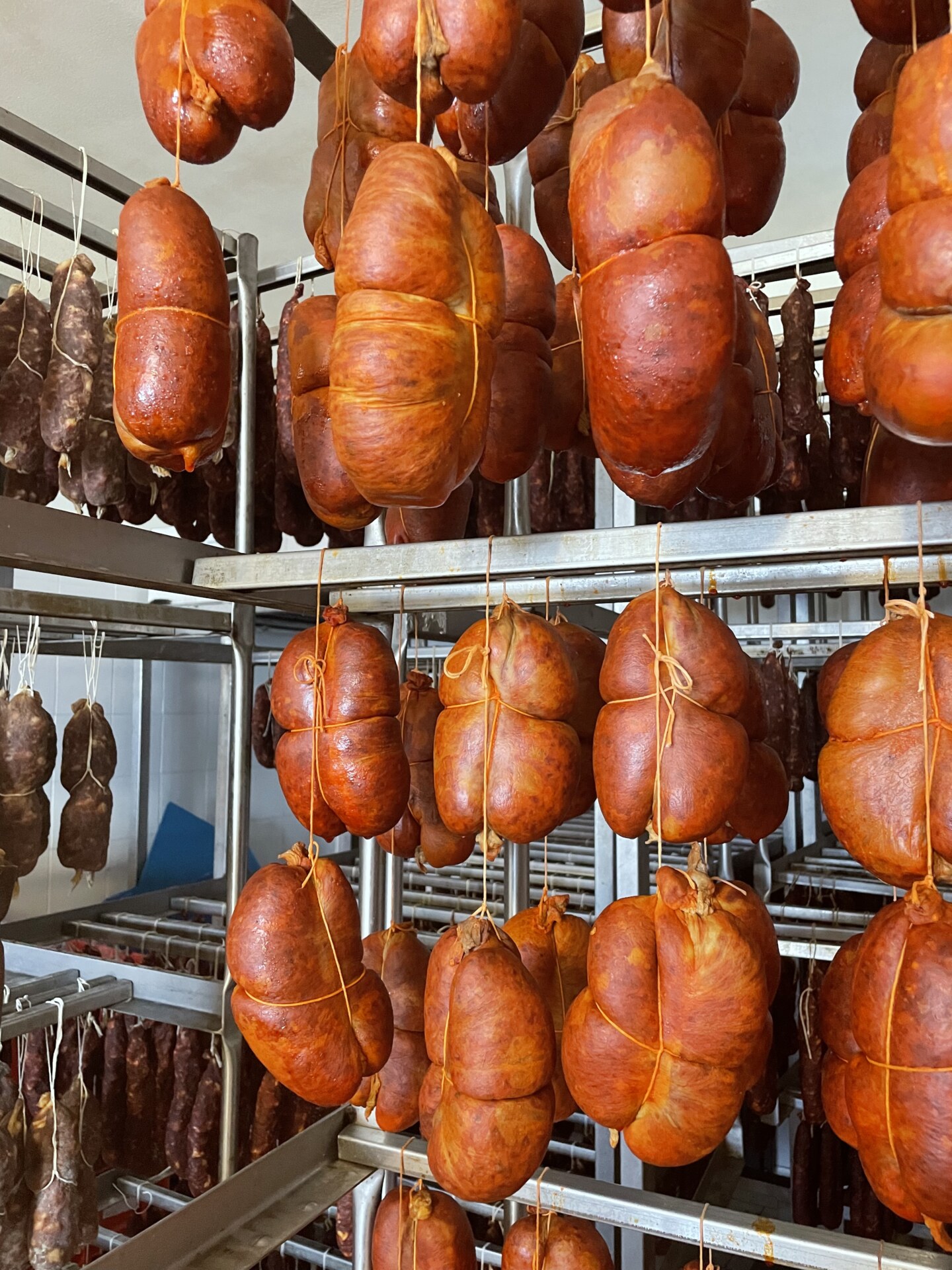
'Nduja
LAGANE E CICCIARI
A shining example of cucina povera, this simple dish tops lagane, a pasta indigenous to the region, with chickpeas (preferably not canned), cooked in garlic and oil and often enhanced with chili, rosemary, or parsley so that the sauce is creamy and oily. It really is a plate that is more than the sum of its parts. Some claim that the pasta is one of the oldest, made of durum wheat and cut into short, wide ribbons. Also known as the piatto del brigante, or the brigands’ plate, the dish is said to have been a favorite of the bandits and outlaws who inhabited the forests of Calabria and Basilicata, and you can find versions of it throughout the south: some with tomatoes, some with lard, some soupier, and others less so.
MORZELLO AND PITTA
An identifying dish of Calabria’s capital Catanzaro, the morzello, or rather “u morzeddhu catanzarisa”, is a stew of tripe, spleen, heart, lung, esophagus, concentrated tomato, spicy chili, salt, laurel, and oregano, best eaten in a typical local bread called “pitta”. With roots in working class cuisine–offal was the only meat they could afford–the morzello is often called the city’s “most illustrious” dish and is even venerated by a cult, the Ancient Congregation Tre Colli. (Members solemnly swear allegiance to the morzello, signing a pledge with a sauce-smeared chin on baker’s paper.)
Its bread, on the other hand, has the fluffiness of a focaccia and the shape of a bagel, most likely finding its roots in Ancient Rome and the custom of offering decorated focaccia to the gods; “pitta” comes from the Latin “picta”, meaning “painted”. What is now known as pitta, however, was simply used to test the oven temperature for baking more prestigious types of bread. But nothing could go to waste, of course, and an underdog story this is, for pitta is now one of the top street foods of Calabria, found stuffed with the morzello or meats, cheese, vegetables, herbs, and, often, pepperoncini.
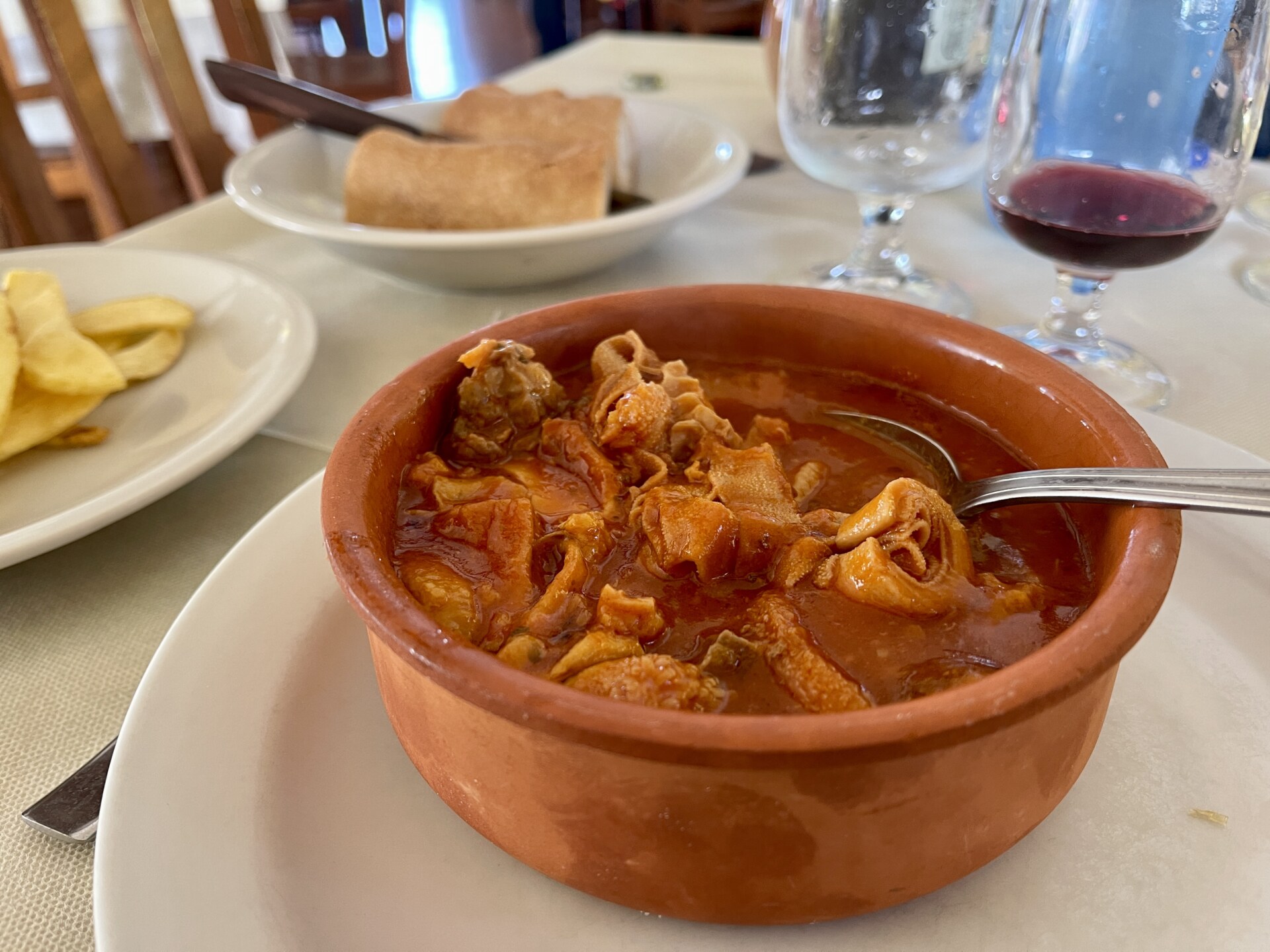
Morzello
LA CREMA REGGINA
We all know the best foods come from accidents: here’s another piece of evidence. Story goes that Reggio Calabrian gelatiere Pepé Caridi was making a pastry filled with crema pasticcera, realizing part way through that he didn’t have any flour to finish the treat. Instead, he supplemented it with rum (if only we could get into his brain to understand how this logically followed). The result was a type of rum-heavy custard, which he filled with carob seeds (now swapped for chocolate chips) and candied fruits (orange peels and cherries), colored bright pink with Alchermes, and named after his hometown. You’ll find gelato-fied versions of it across Calabria, but we recommend looking for one made with the original recipe: technically, a custard thanks to the addition of egg yolks.
SGUTA
For this typical Easter bread, an eggy dough is wrapped around a whole, shell-on egg like a wreath. Tucked in raw, the egg cooks along with the dough–sometimes flavored with anise, sometimes with orange–in the oven. The egg pops out rather easily and is then shelled and eaten alongside the bread. It’s said that farmers would eat the bread at the crack of dawn on Good Friday, breaking their 40-day Lenten fast before heading out to the fields.
PASTA CA MUDDICA ATTURRATA
A workhorse of the cucina povera canon, this pantry pasta comes together with just a few ingredients. Spaghetti or struncatura (a typical noodle from Reggio Calabria), anchovies, breadcrumbs (historically made from stale bread), pepperoncini, garlic, and olive oil make a primo that’s deeply umami, spicy, and texturally interesting (thanks to toasting the breadcrumbs). You’ll also find the plate–often with the addition of tomato sauce–in Sicily.
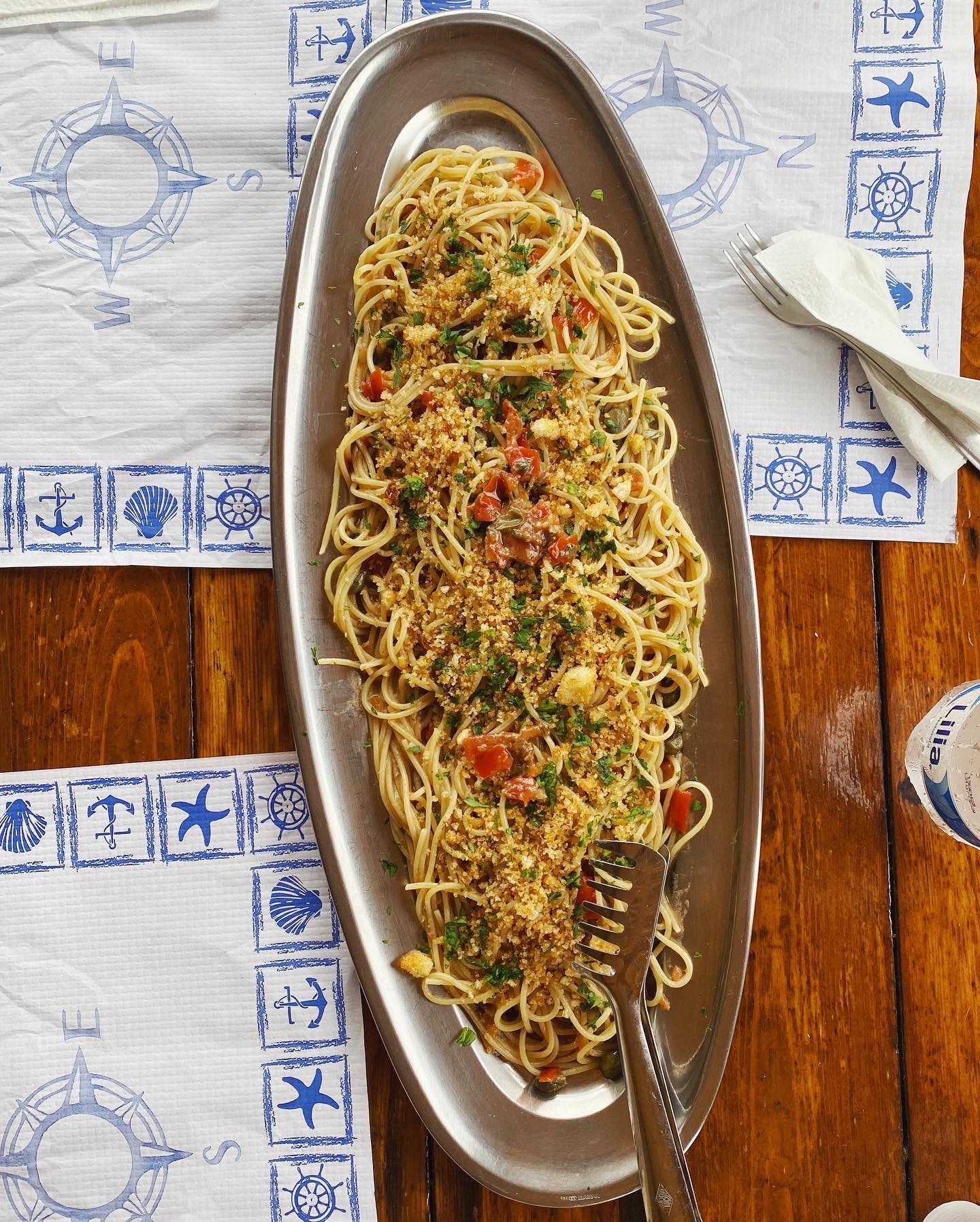
Pasta Ca Muddica Atturrata
CACIOCAVALLO AND PATATA DELLA SILA IGP
These two IGP products from the Sila highlands are delightful on their own and magical when paired. The former–a semi-hard, spun-paste cheese–gets its quirky name from the Italian word for horse (cavallo) because the cheese is aged in pairs via a rope hanging over a wooden beam, resembling stirrups on a horse. Delicate and ever so slightly sweet when young, the cheese reaches intense saltiness when aged. The Sila IGP Potato, on the other hand, is nothing like the humble varieties you usually find elsewhere. A greater starch content lends nutrition and flavor, and they have a shelf-life that a Russett has cause to be envious of. You’ll often find the cheese grilled and the potatoes ‘mbacchiuse, cooked with plenty of oil and salt.
PIPI CHINI
A waste-saving recipe if we’ve ever seen one, pipi chini are bell peppers stuffed with any sort of filling: minced meat, stale bread or rice, cheese, eggs, onions, nuts, vegetables, and even tuna, olives, or capers. Head to a Calabrian gastronomia–or a local’s house–to try them, as they’re not as common on restaurant menus.
POLPETTE ALLA MAMMOLESE
These pork meatballs get a good dose of creamy tang from pecorino and goat’s cheese made in the mountains of Aspromonte National Park. From the small town of Mammola, polpette alla mammolese are first fried, then cooked in a simple tomato sauce–historically reserved for festive occasions and sometimes served atop fresh, homemade pasta… Perhaps the Italian-American favorite finds one of its predecessors here!
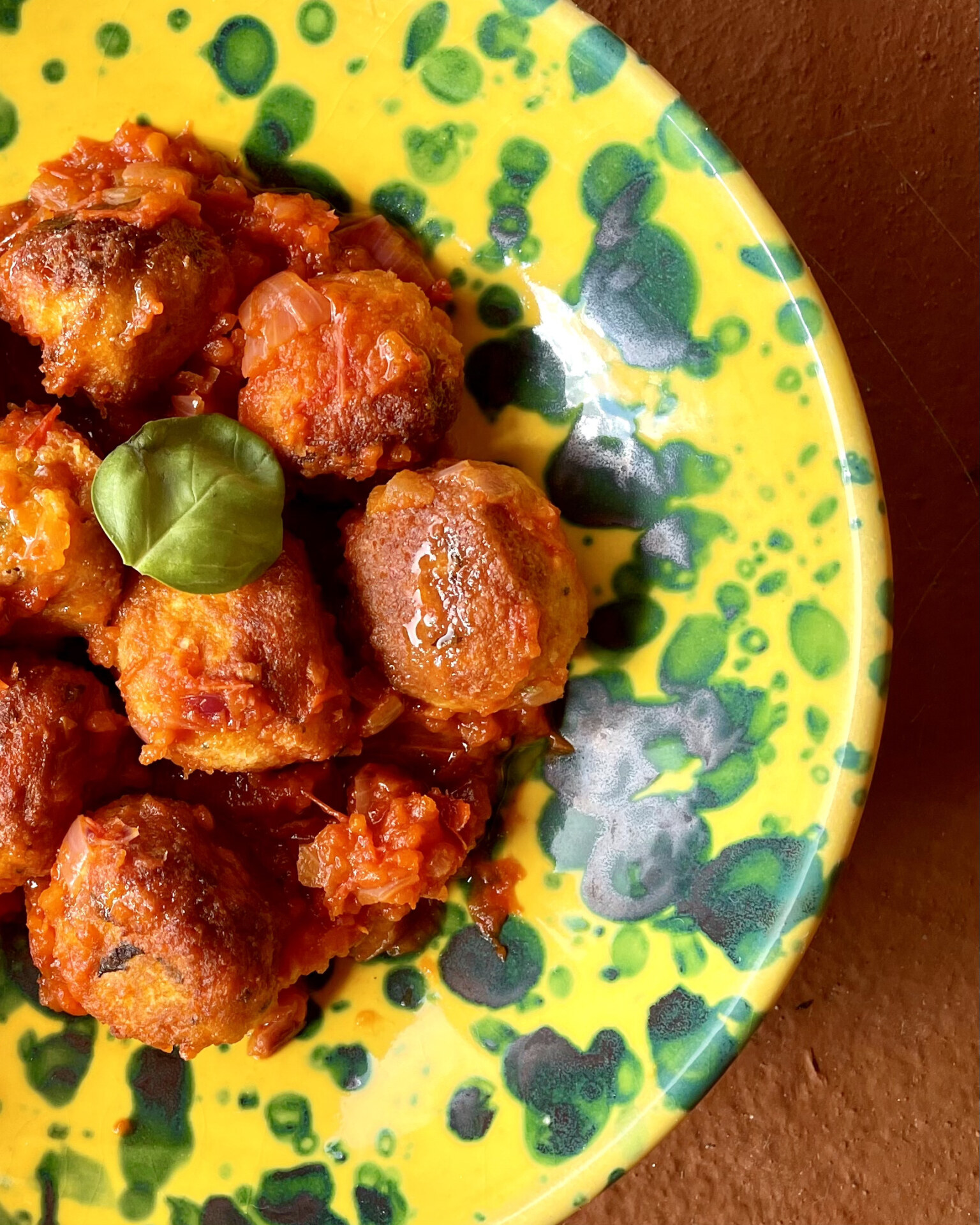
PESCE SPADA ALLA GHIOTTA
A favorite in both Sicily and Calabria, this swordfish alla ghiotta, which translates to “glutton-style”, is one of few seafood dishes of the region–surprising given the region’s extensive coastline along the Ionian and Tyrrhenian Seas. Here, thick meaty steaks of the namesake fish are served atop slow-cooked tomatoes, olives, capers, pine nuts, raisins, anchovies, and a handsome portion of Tropea onions–sweet, salty, and briny all in one.
CUDDRURIADDRI
Though their name is quite complicated, these fried doughnuts from Cosenza are anything but. Just flour, water, salt, yeast, and potatoes make up the simple dough, to be eaten on the eve of Immaculate Conception (December 8th), when the scent of boiling oil fills the city. Throughout Calabria, the days preceding religious holidays are often for sparseness: Calabrians eat but not to excess, go without meat, and use povera ingredients. Case in point: the potatoes–which help make the dough softer and more delicate–usually come from the nearby Sila, both local and inexpensive. Try cuddruriaddri piping hot, dipped in sugar and paired with a glass of local red.
CIAMBOTTA
The Calabrian cousin to Sicily’s caponata (but without the vinegary flavors), this vegetable-forward stew comes in a million iterations. With a name literally translating to “mess”, ciambotta is more of a set of guidelines than an actual recipe. Eggplants, zucchini, tomatoes, red peppers, potatoes, and onions–however many of each you want–are cooked down until soft and paired with the likes of bread, grilled meats and sausages, or eggs.
FILEJA
Also known as maccarruna, maccarruni, or filedda, this pasta is classic Calabria. With a shape similar to busiate, but less twisted, fileja is an eggless fresh pasta made by rolling ropes of dough around a type of wooden or metal stick called danaco. The thick, doughy noodles are perfect for holding up heavier, meat-based sauces, and you’ll most often fileja with a sugo made from the aforementioned ‘nduja, though the vegetarian Fileja Tropeana–with eggplant, zucchini, and cherry tomatoes–is also a local favorite.
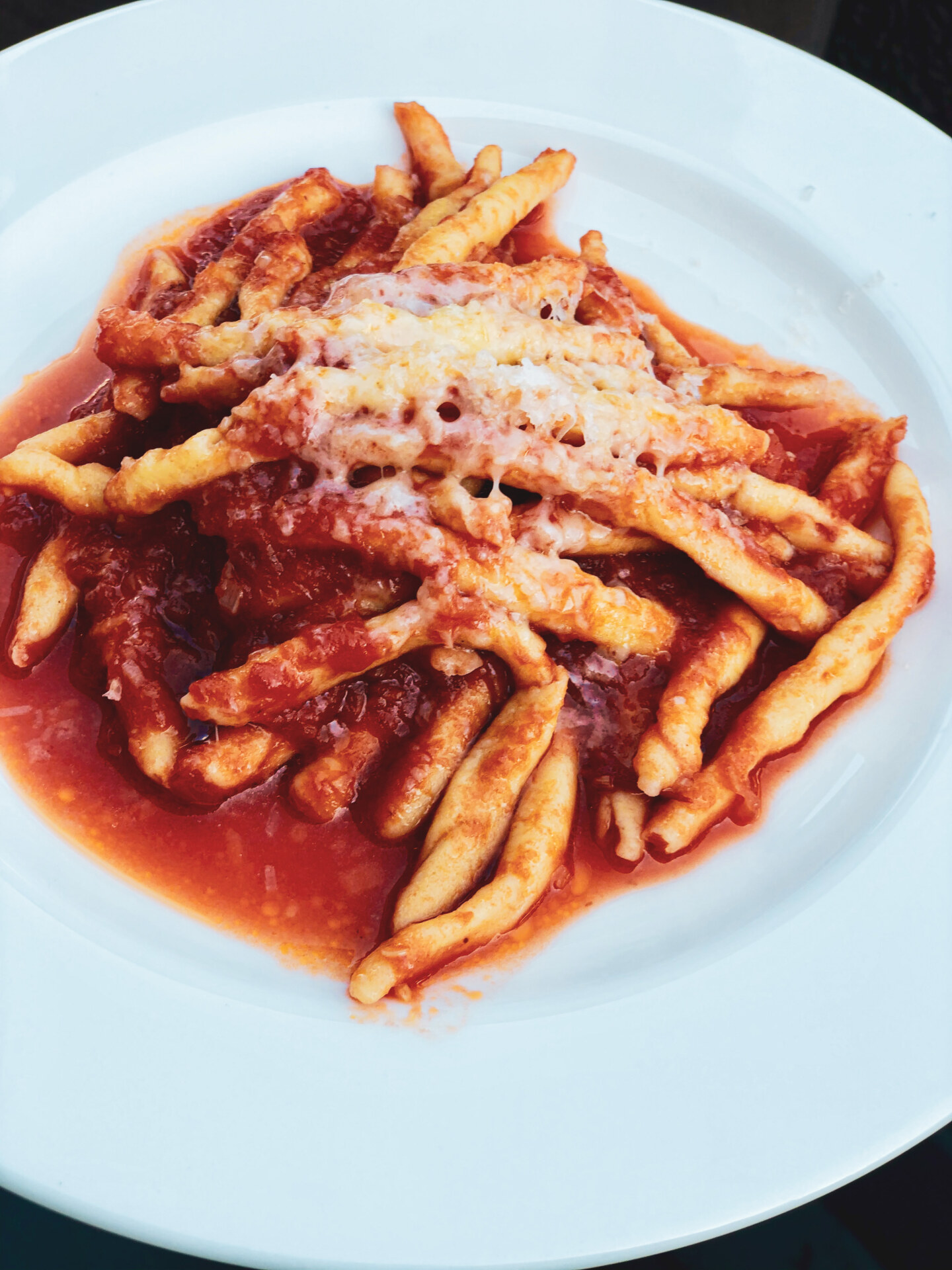
Fileja
RIGATONI ALLA SILANA
From the forested mountains of Sila, this primo is a flavor bomb. The sugo–composed of aged Calabrian sausage (like soppressata), prosciutto crudo, guanciale, porcini, tomatoes, onions, garlic, basil, parsley, and pepperoncini–is slow cooked for hours in a terracotta pot, heaped onto rigatoni (though you may also find it with fileja), and finished off with grated pecorino, caciocavallo, and pepper to taste. It’s an appropriately porky plate for an area known for its pork products: historically, the mountains of Sila were isolated from the rest of Calabria, especially in the winter when the tricky mountain passes were made even more difficult to navigate, and so its inhabitants found creative ways to preserve meat (and all foods, really). If you’re in these parts, don’t miss trying their versions of soppressata, lardo, capocollo, pancetta, and sausage.
MOSTACCIOLI
Not to be confused with the Neapolitan chocolate cookies of the same name, these crunchy honey biscuits are eaten for celebrations across the toe, whether for Christmas, a wedding, a baptism, or St. Joseph’s Day, March 19th, a religious holiday particularly popular in Calabria. The dough is uber simple–just flour, baking powder, honey, and egg yolks–but the shaping can be anything but. Common forms include a fish, a basket, and a swirly Baroque-style “S”, but you can also find them in intricate designs, like biblical scenes or the horse of St. Francis.
FRISELLA
They may seem like just rounds of dry, stale bread (and your teeth would agree), but friselle are shelf-stable wonders. Double baked to reach a jaw-breaking consistency, these rustic, durum wheat crackers are a versatile canvas for any sort of crostini, but are best with a bruschetta-like preparation. Run water over the frisella to soften it a bit, rub a clove of garlic on it, and top with a mixture of chopped tomatoes, onions, chilis, olive oil, and salt for the perfect aperitivo accompaniment or merenda.
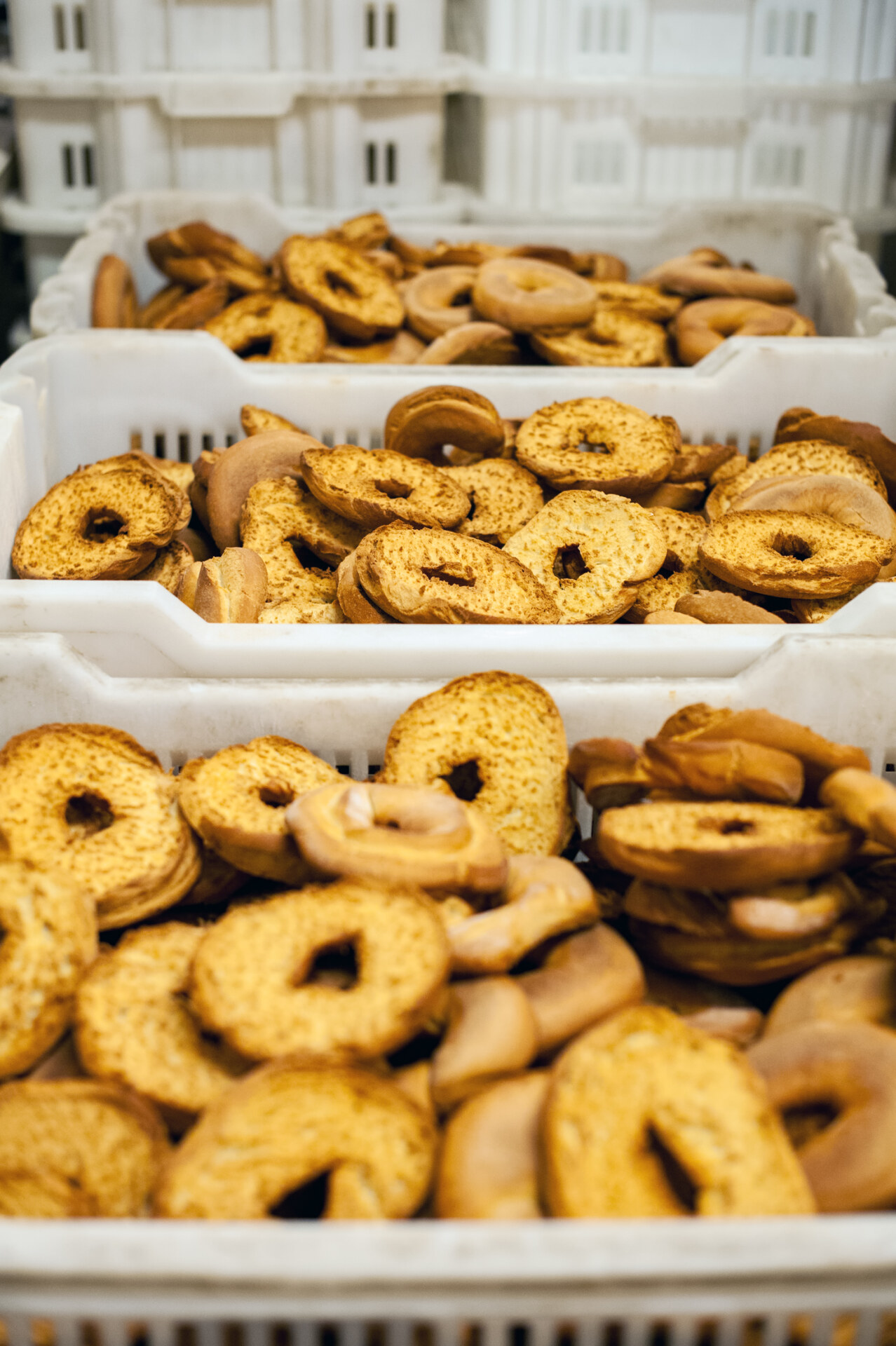
Frisella
FRÌTTULI AND CURCÙCI
Any meat part you can imagine can make it into frìttuli. This waste-nothing soup cooks down pork rinds, various cuts of pork meat and innards, and pork fat into a rich, collagen-filled concoction. Traditionally made on Saturdays, frìttuli is boiled slowly over coal embers in a caddàra, a type of copper pot, that’s often set up by the butchers outside their shops. And with frìttuli comes curcùci, the solidified stuff left at the bottom of the pot after cooking. Calabrians eat it with polenta and broccoli in the winter, pitta and ricotta on the go, and even with scrambled eggs for a quick meal.
VRASCIULI
These fried eggplant meatballs are comfort food at its finest. The bulk of these polpette, shaped like American footballs, are made up of minced meat (per tradition, half beef and half pork), eggplant, stale bread, Parmigiano or pecorino, eggs, parsley, garlic, and olive oil; many recipes omit the eggplant, but we love the softness they impart. Though they can be found under the secondo section of a Calabrian menu, the crispy-on-the-outside, soft-on-the-outside nuggets are most often served as antipasti.
PANACIELLI
Calabria’s super fruit, cedro’s uses run the gamut: find it as a cure for headaches and gout, in sodas and juices, sliced thin and served as a salad (with pith and all), or in panacielli. These small Christmas loaves are studded with raisins, wrapped in cedro leaves, and tied up with sprigs of ginestra.
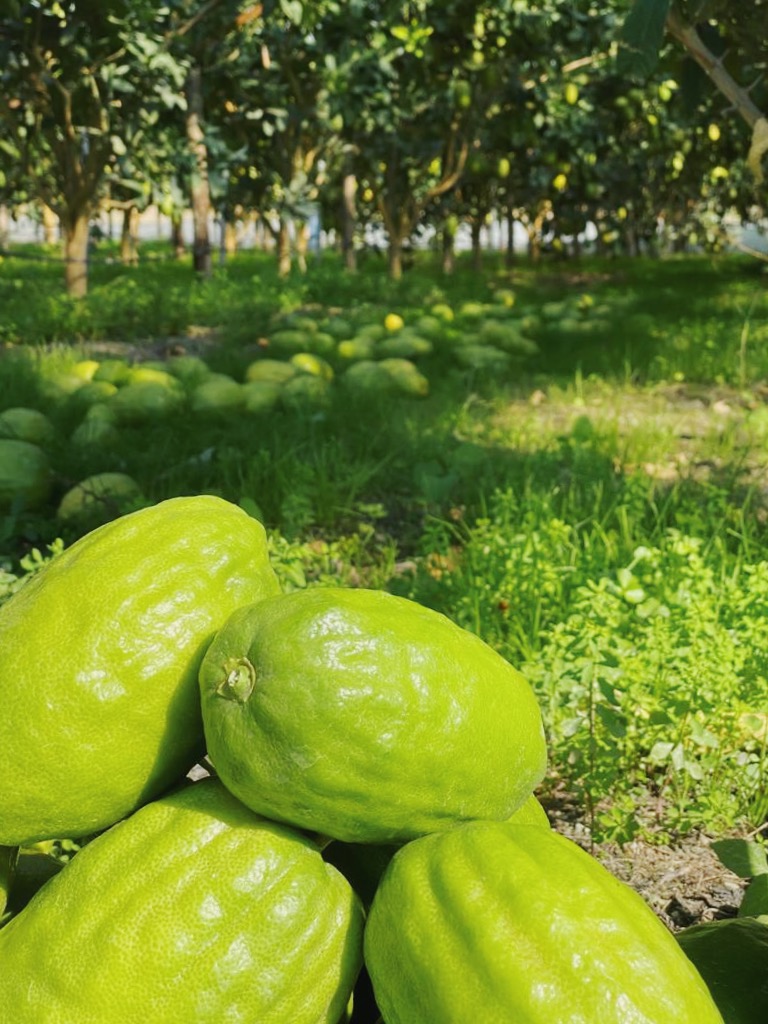
Cedro


